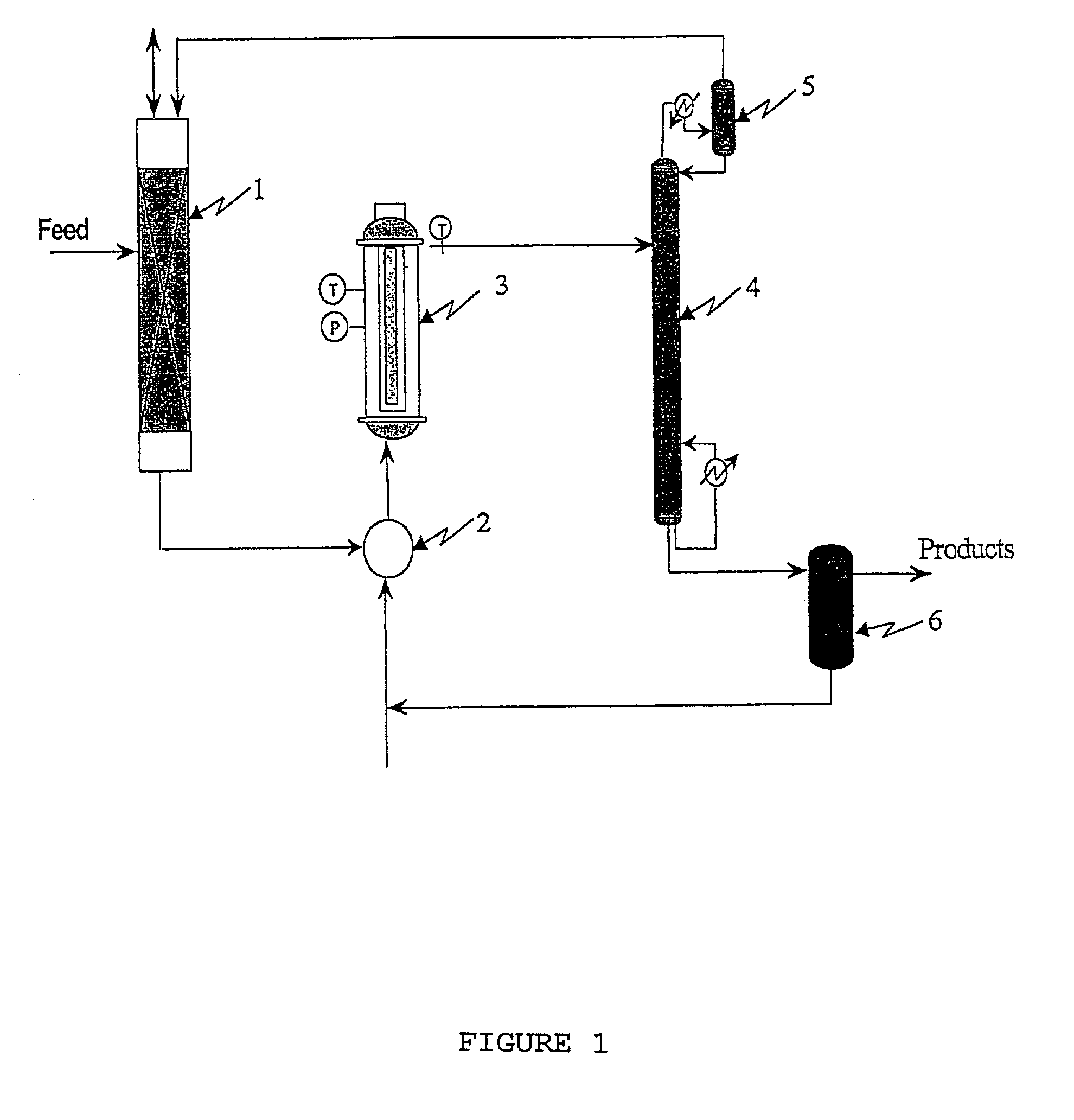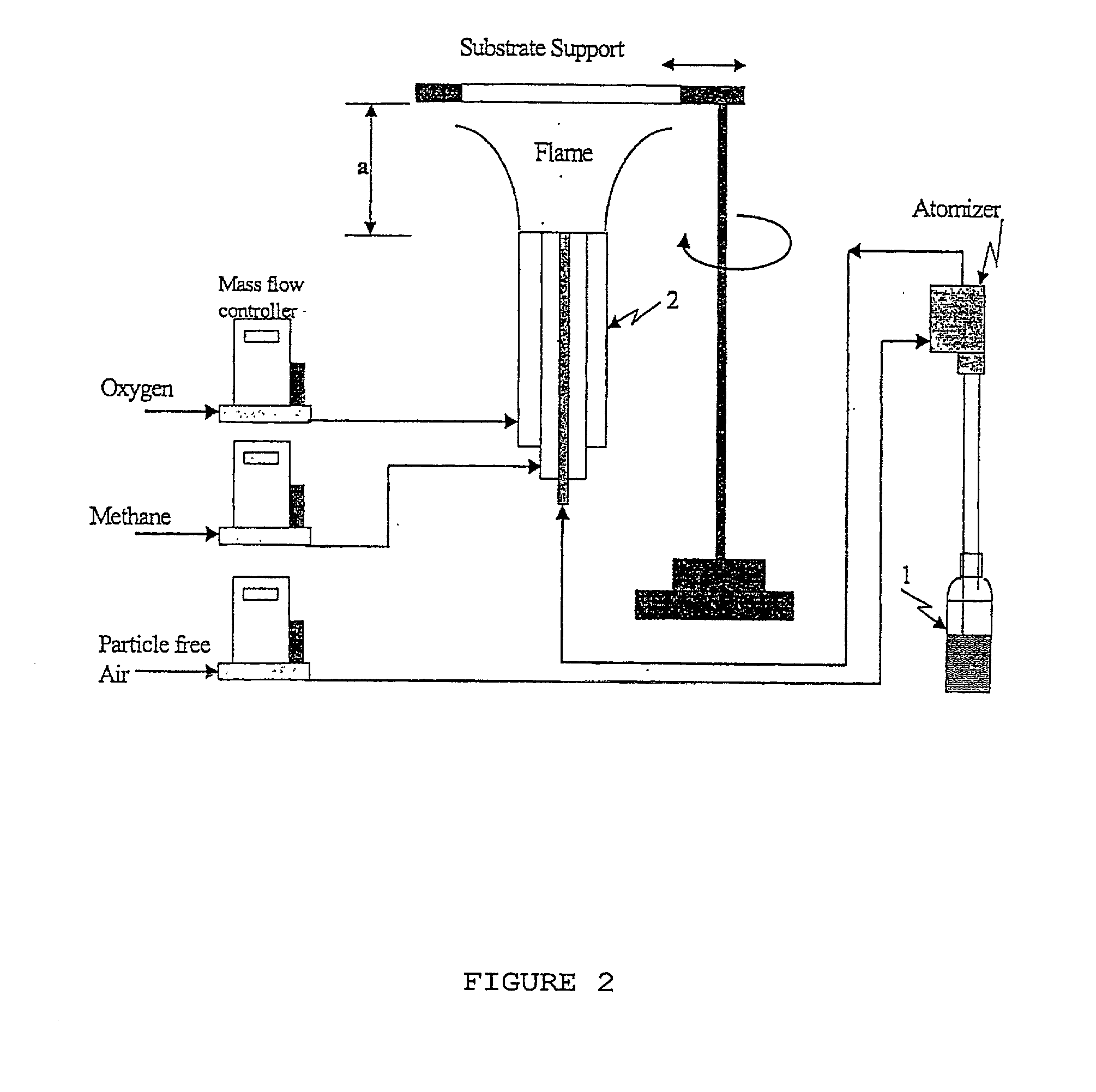Process for photo-induced partial oxidation of organic chemicals to alcohols, ketones, and aldehydes using flame deposited non-structured photocatalysts
a non-structural, organic chemical technology, applied in the direction of metal/metal-oxide/metal-hydroxide catalyst, energy-based chemical/physical/physical-chemical process, etc., can solve the problems of low energy efficiency, low conversion coefficient, environmental hazardous waste and byproducts, etc., to achieve easy change, increase the amount of cyclohexane conversion or product formation, and the effect of easy chang
- Summary
- Abstract
- Description
- Claims
- Application Information
AI Technical Summary
Problems solved by technology
Method used
Image
Examples
example 2
[0084] Different methods of preparing the photocatalyst (dip coating using titanium isopropoxide, commercially available process, sol-gel process and flame aerosol process) were used to deposit the titanium dioxide films (Table 4). Comparing the different catalyst preparation and coating method assists in proving the effectiveness of flame aerosol method. In all cases expect Case 2, the crystal structure of the deposited titanium dioxide was primarily anatase. The flame coated process resulted in more open structures, which allows the penetration of UV light. Flame coating required the smallest mass of titanium dioxide to coat the surface and the smallest primary particle size as determined by transmission electron microscopy.
[0085] Two five-hour reaction cycles were used for testing six different films reactors (Table 4). The conversion, yield, reaction selectivity and activity are shown for the different systems. Conversions vary from 1.1 to 8.65 and yield exceeded 96%. The conven...
example 3
[0086] To better establish the role of catalyst the activity of the catalyst was reported as the amount of product formed per gram of catalyst per time. This definition of catalyst is similar to the turnover number per unit mass of catalyst per unit time, and provides a basis for an overall comparison of the different coatings. The activity ranged from 0.013 .mu.mole / (gm.min) for the dip coating method (Case 1) to a high value of 0.969 .mu.mole / (gm.min) for the flame aerosol method (Case 6) (Table 2).
[0087] The flame aerosol coating showed higher effectiveness due to the open structure of the coating and the nanometer size primary particles that creates more electron- hole pairs for the redox reactions. Furthermore, the high specific surface areas resulted in quick desorption of the products, and this minimized coking on the catalyst surface. FIG. 4 illustrates the comparative performance of the thin film reactors prepared by the different coating methodologies. The flame aerosol me...
example 4
[0088] To examine the effect of coking on the catalyst surface, a second five hour testing cycle was used. The activity decreased for most of the films, and a visual browning of the catalyst surface was observed. A similar browning of TiO.sub.2 film was observed by others for the gas phase oxidation of benzene using dry air. The degree of browning (or coking) was greatest for the dip coated films (Case 1 and 2), lesser for the sol-gel films (Case 3) and particularly absent for the flame aerosol coated films (Cases 4, 5 and 6). The minimal coking of the flame aerosol coated films could be due to the presence of solid primary particles (high density, with minimal internal porosity) and the high specific surface areas resulting in quicker desorption of the products (low retentivity on the surface) preventing the formation of higher molecular weight compounds on the surface.
[0089] The flame aerosol coating method enabled the formation of high surface area aggregates with minimal pore ar...
PUM
| Property | Measurement | Unit |
|---|---|---|
| temperature | aaaaa | aaaaa |
| mole ratio | aaaaa | aaaaa |
| thickness | aaaaa | aaaaa |
Abstract
Description
Claims
Application Information
 Login to View More
Login to View More - R&D
- Intellectual Property
- Life Sciences
- Materials
- Tech Scout
- Unparalleled Data Quality
- Higher Quality Content
- 60% Fewer Hallucinations
Browse by: Latest US Patents, China's latest patents, Technical Efficacy Thesaurus, Application Domain, Technology Topic, Popular Technical Reports.
© 2025 PatSnap. All rights reserved.Legal|Privacy policy|Modern Slavery Act Transparency Statement|Sitemap|About US| Contact US: help@patsnap.com



